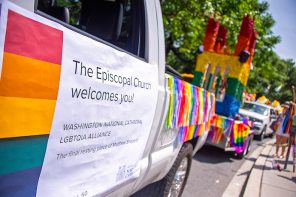At last. The Church of England’s General Synod has voted to allow women bishops. A disastrous failure to do so in 2012 preceded Rowan Williams’s departure as Archbishop, and led to huge public and political pressure to secure the “Yes” vote this time. It’s taken so long to get here (women were first ordained priests in 1994), and created such bad feeling, that the “victory” feels a bit hollow. The whole tale reveals a lot about the Church of England’s problems, and the position of religion in a liberal society.
The CofE remains the largest religious constituency in Britain, with a third of the population still calling themselves Anglican. But whether we look at church attendance, adherence, or baptism and funerals, decline is sharp. For those aged over-60 Anglican is the majority identity; for each younger generation it’s increasingly a minority identity. Only about five percent of young people now call themselves Anglican.
My surveys of Anglican beliefs and values show just how much the “values gap” between leaders and people has widened with every generation. Only 1% of Anglican churchgoers now say they rely on their religious leaders when seeking guidance and making decisions. When it comes to the two most controversial contemporary moral debates—on same-sex marriage and assisted dying—a majority of Anglicans are now in favour, whereas their leaders are united in opposition.
A similar gap has long been evident between the Church’s official teachings and its members’ views about women clergy. A mere 11% of Anglicans and 8% of the general population say that they approve of their church’s policies on women. As long ago as 1979 a poll found 85% of Anglicans in favour of women’s ordination, and last year the same proportion was found to support women bishops.
Whatever their personal views, church leaders have stalled on the ordination of women because of their deference to two small but vocal minority parties within the CofE: Anglo-Catholics at one end of the ecclesiological spectrum, and the conservative evangelicals at the other. Together they represent less than 15% of Anglicans.
Anglo-Catholics opposed women clergy on the grounds that the sacramental priesthood has always been male, that the priest symbolises a male Christ, and that there is no good reason to depart from 2,000 years of tradition. Like Rowan Williams, they worried about maintaining good relations with Rome and with Orthodoxy. Conservative evangelicals opposed women bishops on the grounds of Biblical texts which they interpret as proof that women should not have authority over men in either home or church.
An unlikely alliance of these “male headship” Protestants and Anglo-Catholics has called the shots on this issue until now. Their hand has been strengthened by selective alliances with Anglican bishops in Africa. This has created resentment amongst many Anglicans, and incomprehension amongst the general population. When I ask young people who have a negative attitude to the CofE why they hold that opinion the most common reason is that the Church is sexist and homophobic.
The story of the Anglican (Episcopal) Church in the USA is different. Despite opposition, they approved women priests, bishops—and now an archbishop—earlier and with less damage. But the English Archbishops have chosen to side with the African churches rather than the north American.
There’s a popular argument that illiberal forms of religion do better than liberal forms, even in liberal societies. I don’t believe it’s that clear-cut. It’s true that religious authorities have taken a “post-liberal” turn since the 1970s, but the growing rise of “no religion,” first in Europe and then the USA, is in part a reaction against this. The idea that your average Anglican in Britain yearns for “stricter” religion is demonstrably false. They would, however, have preferred a church which was more responsive to their moral convictions, and better able to accommodate the diversity of their views.




